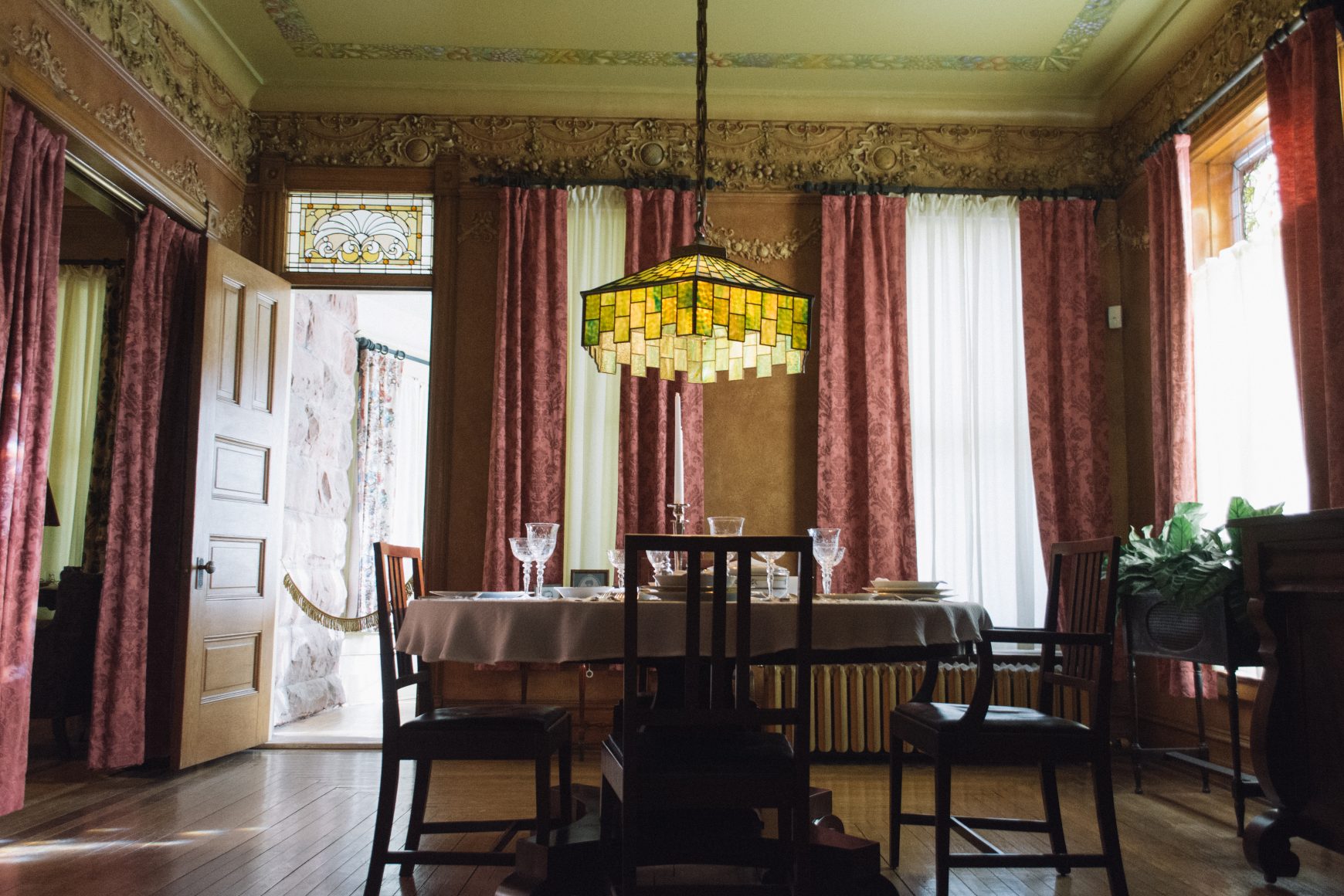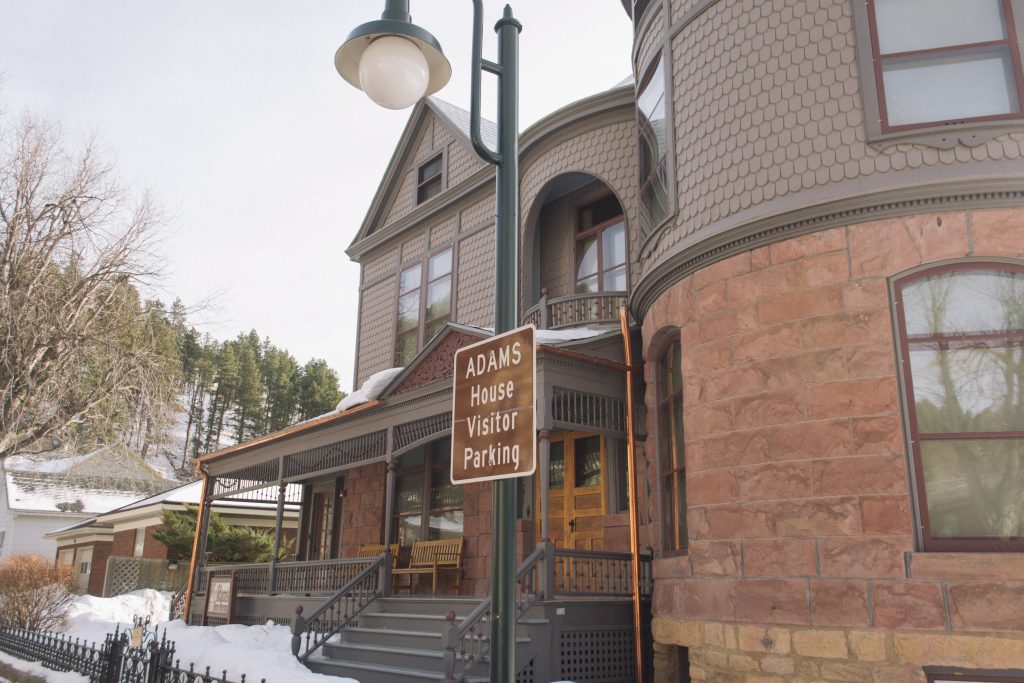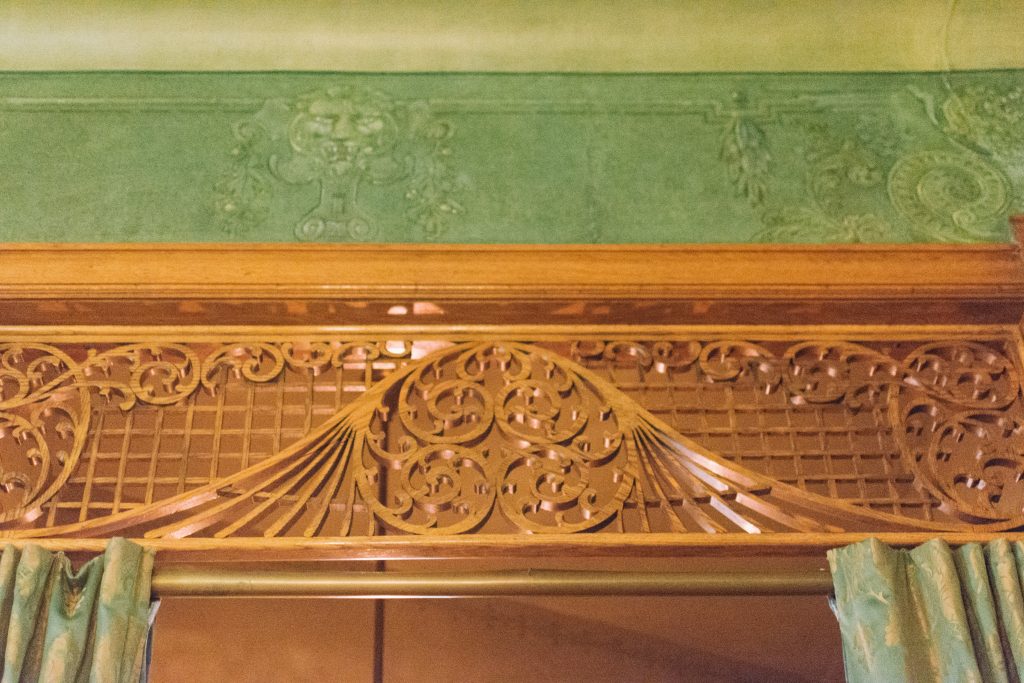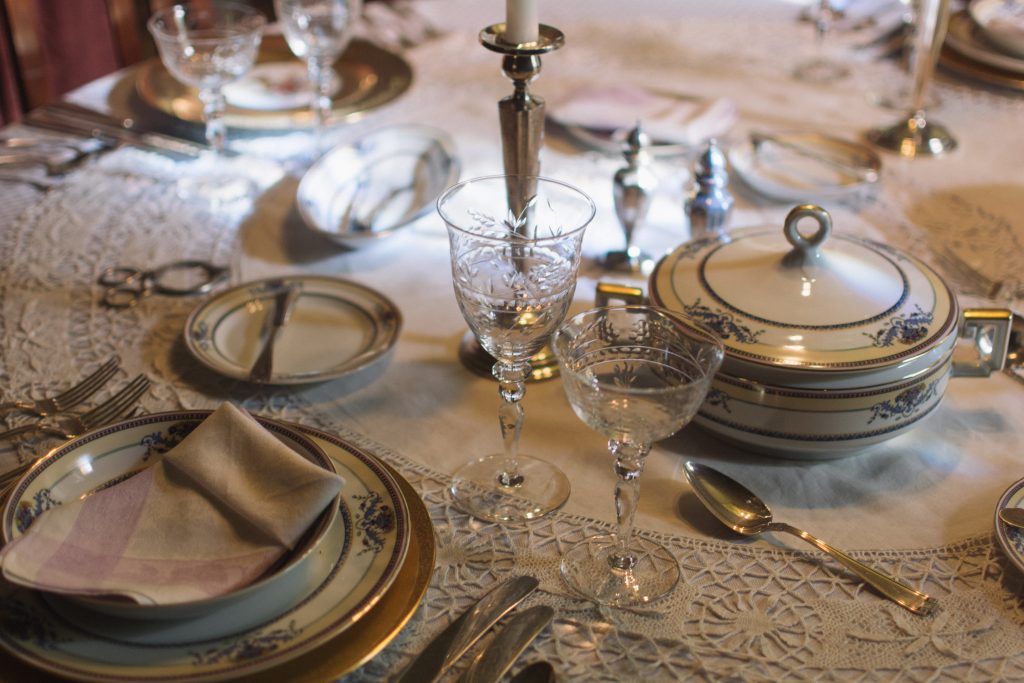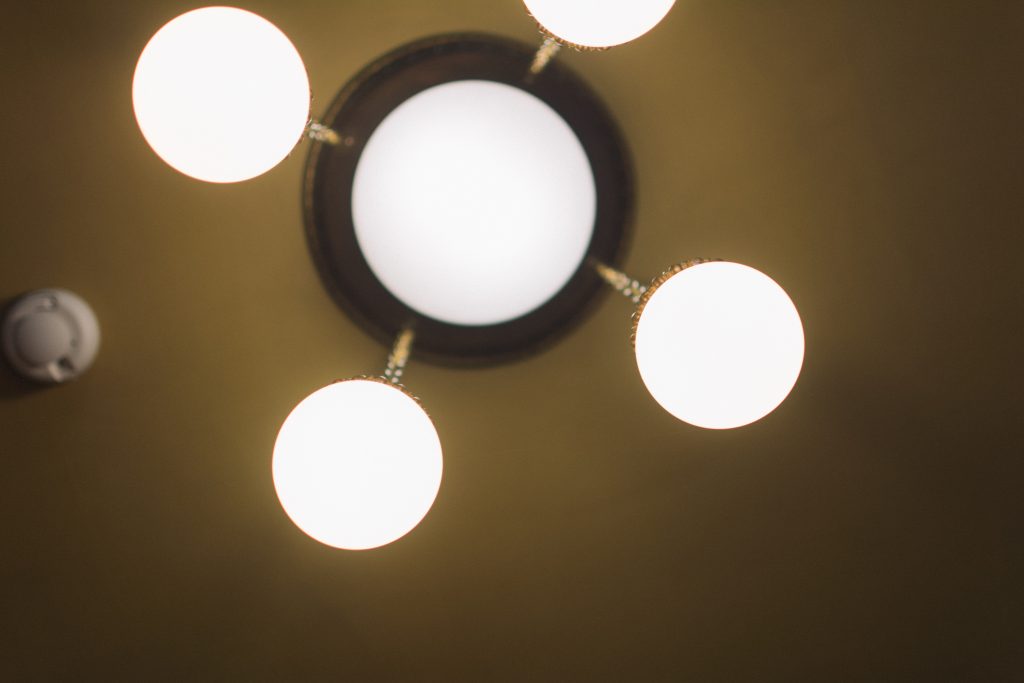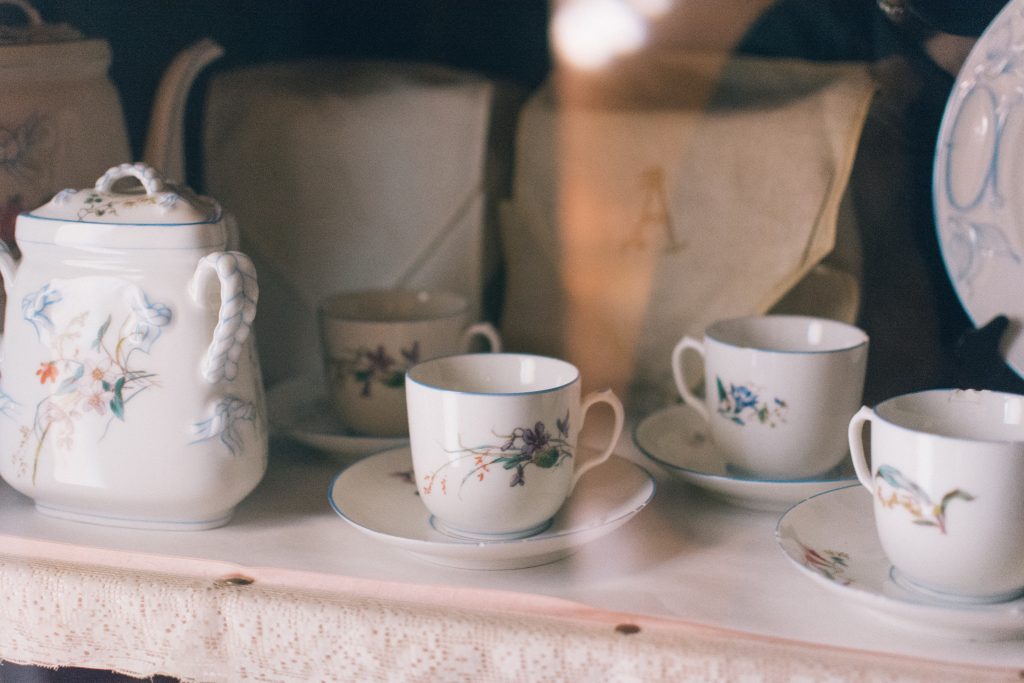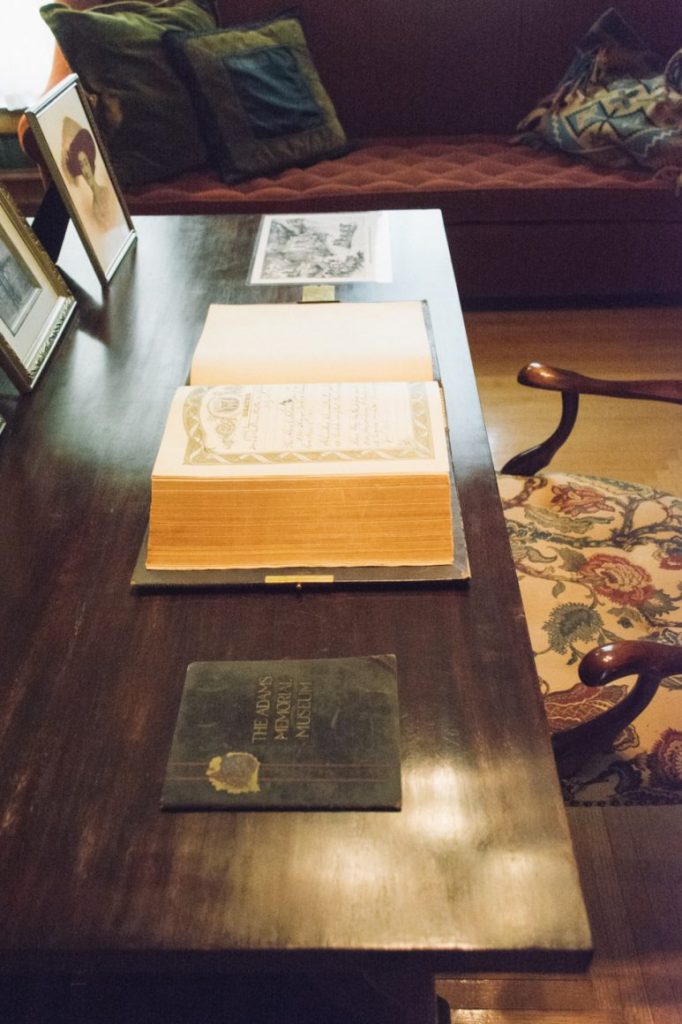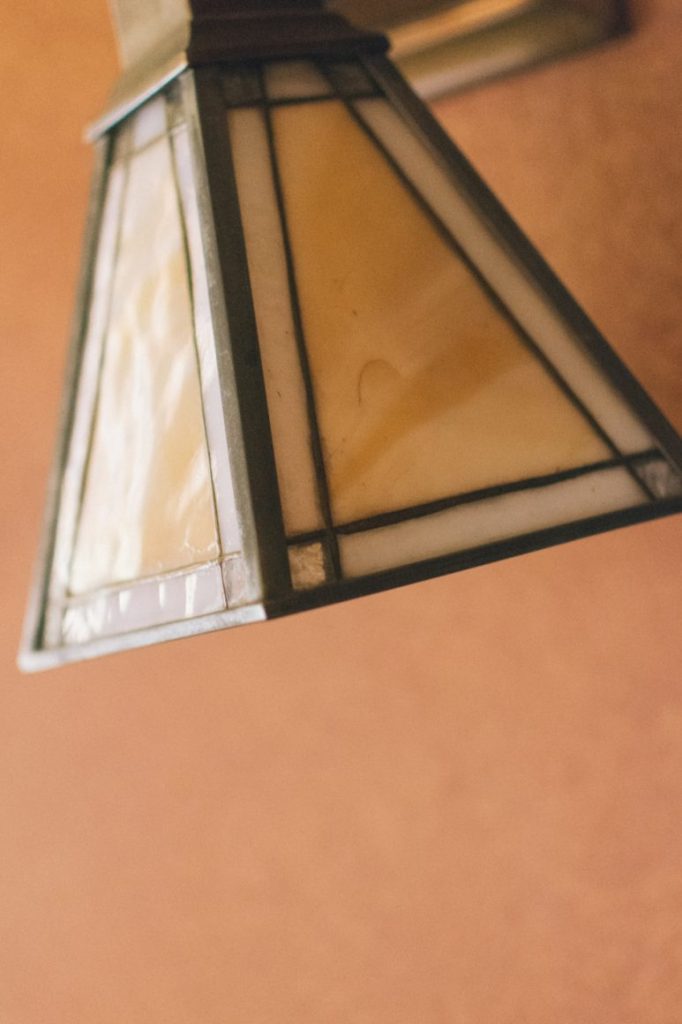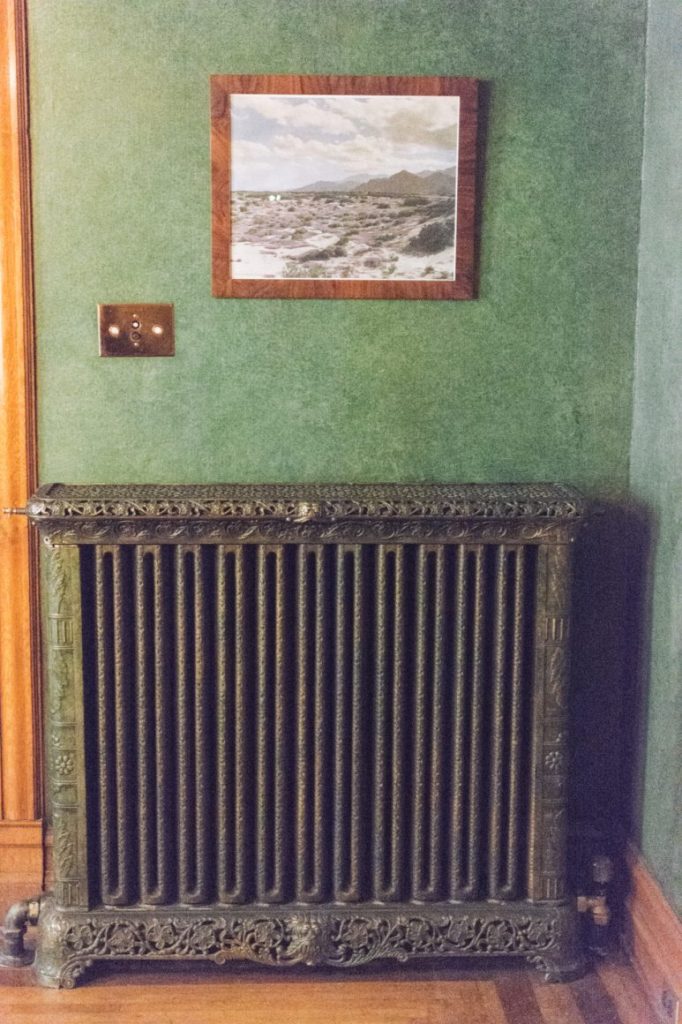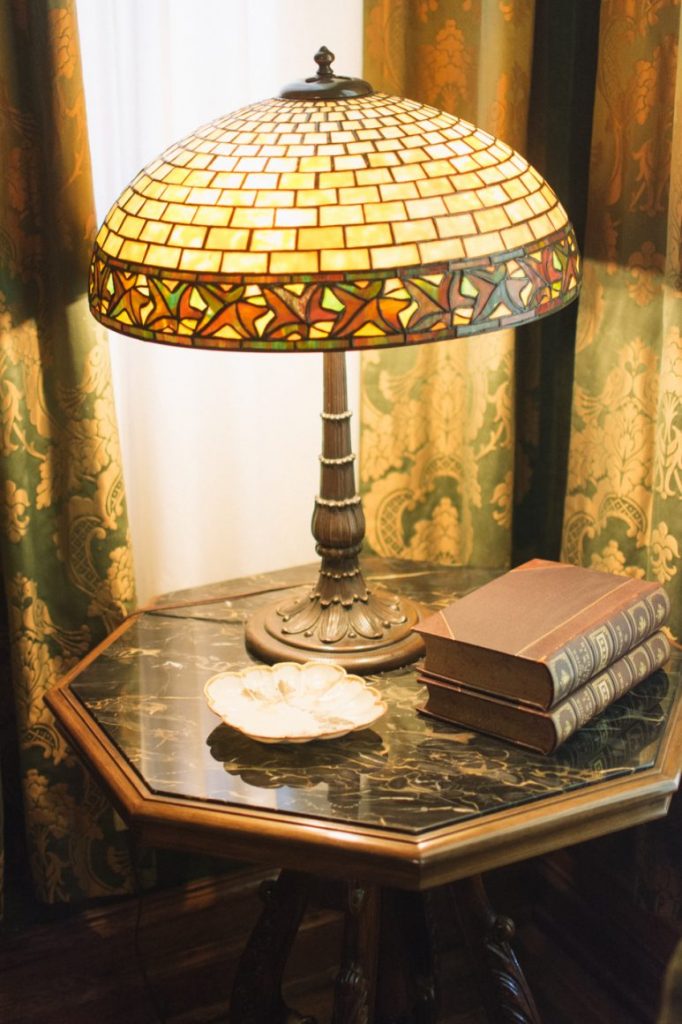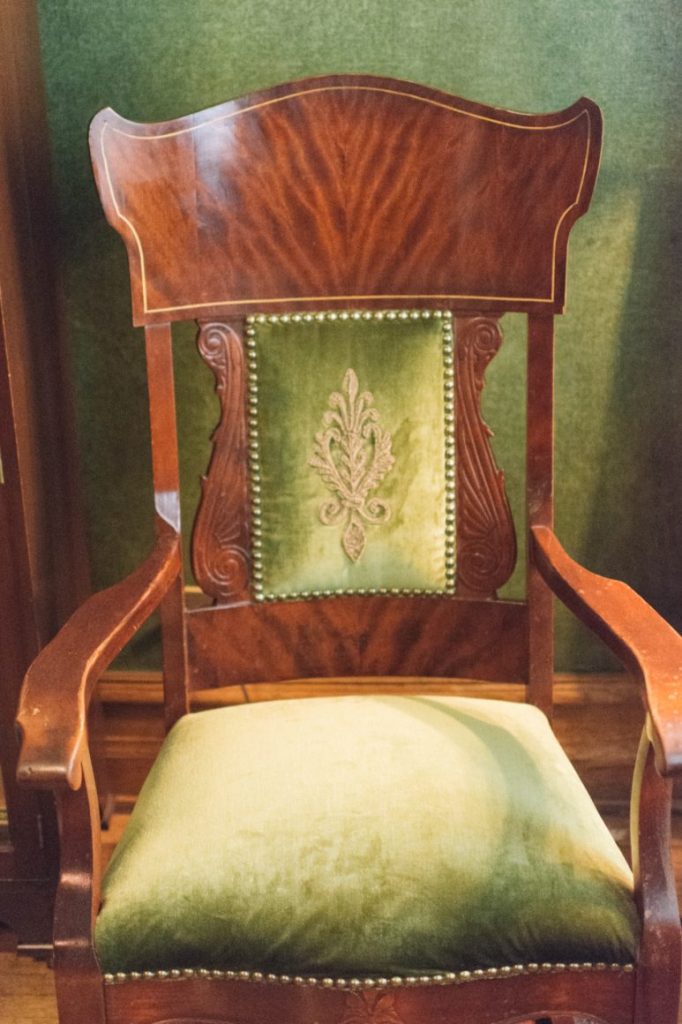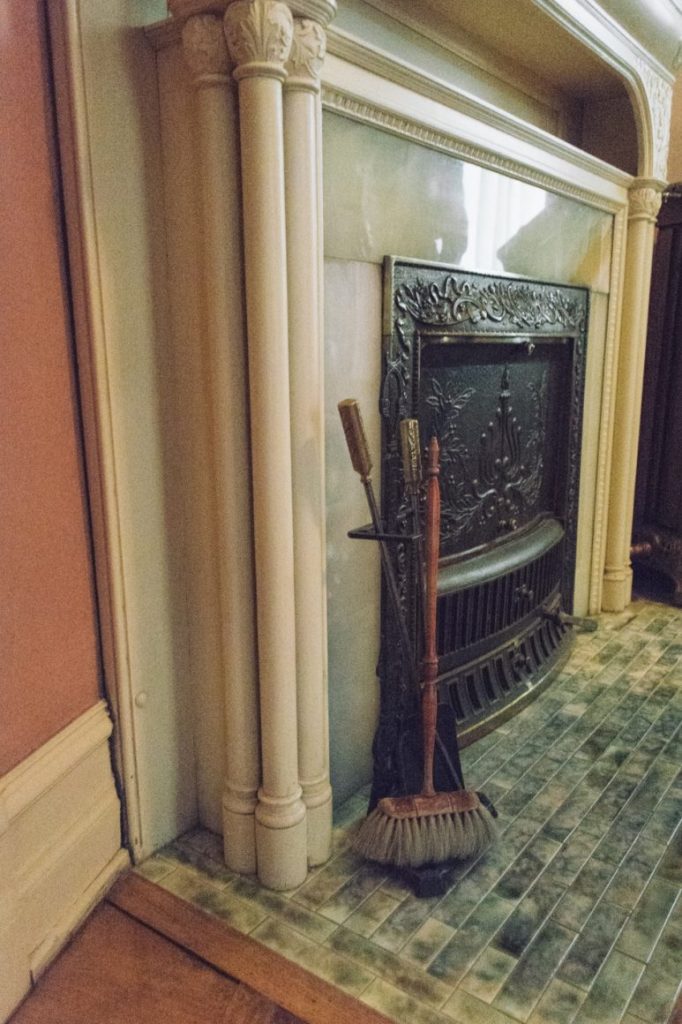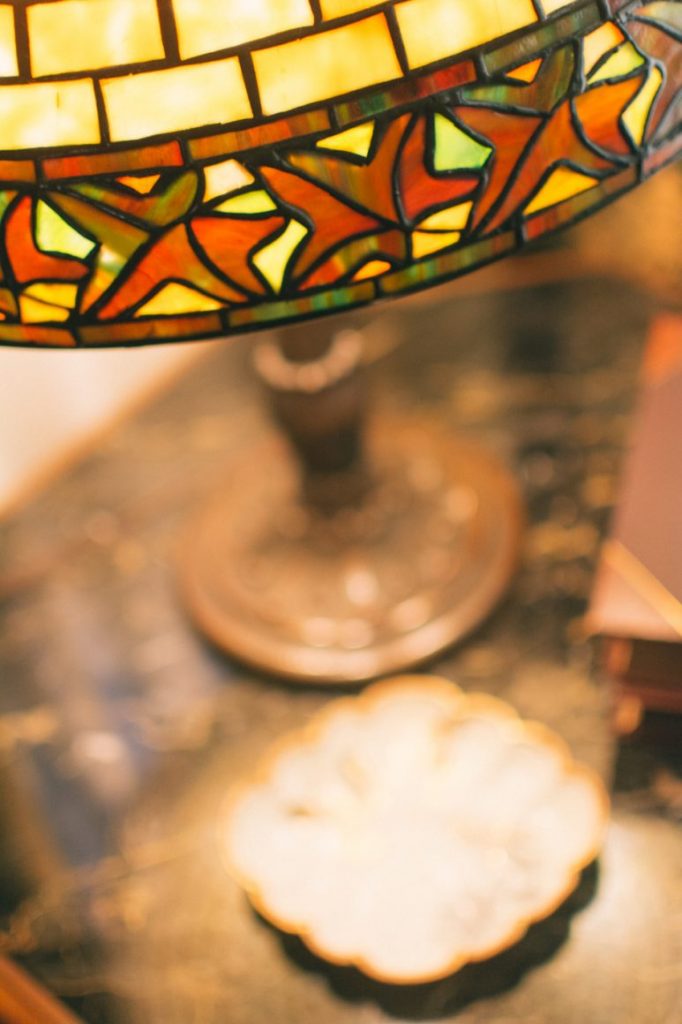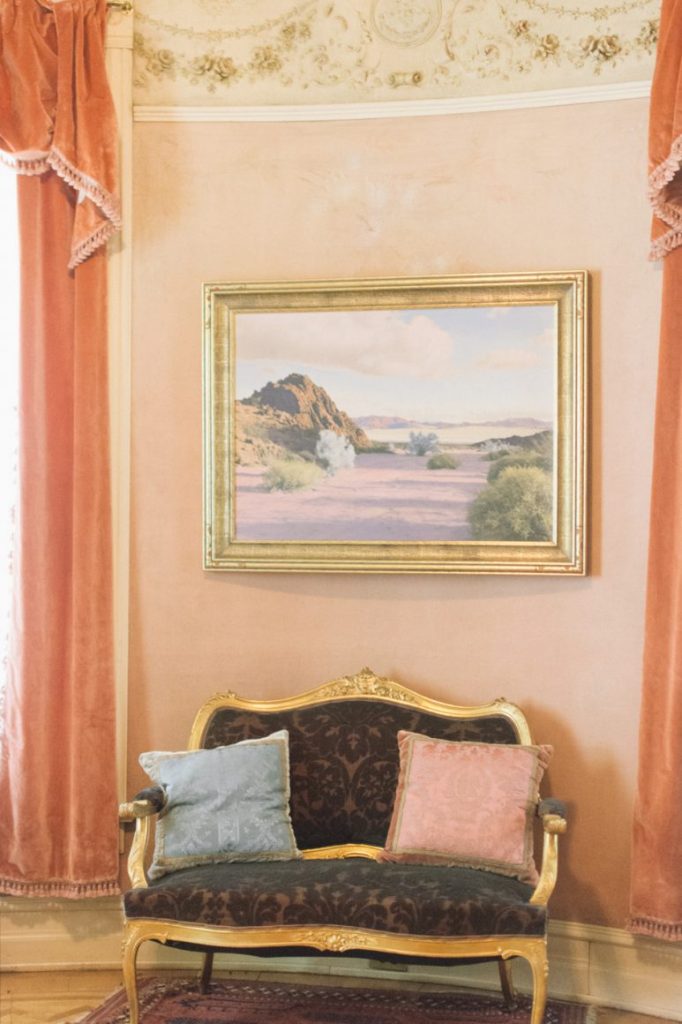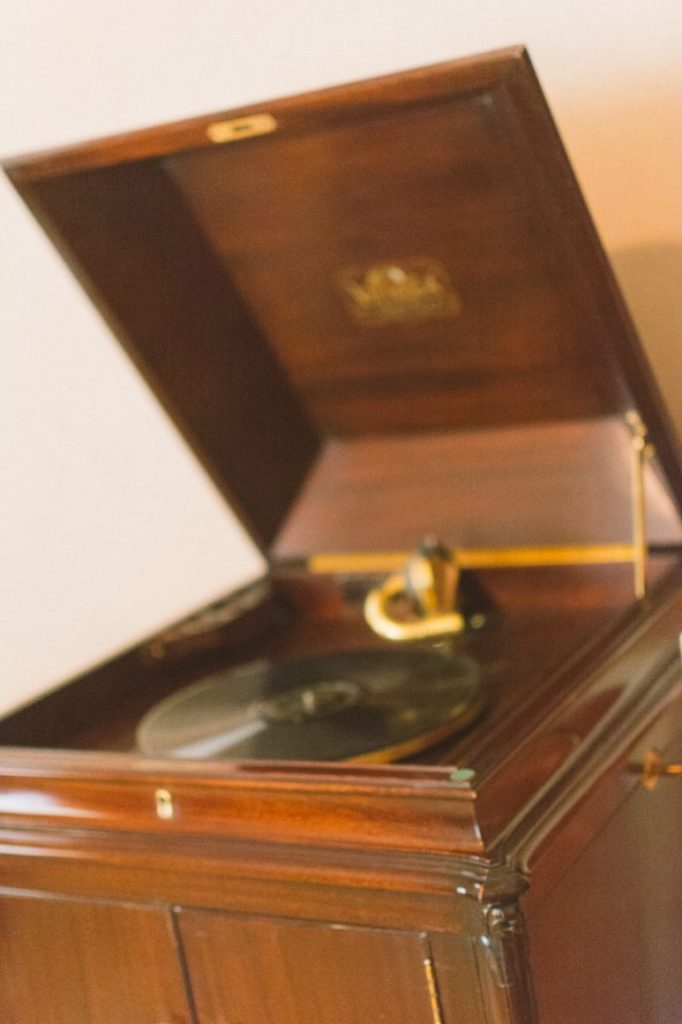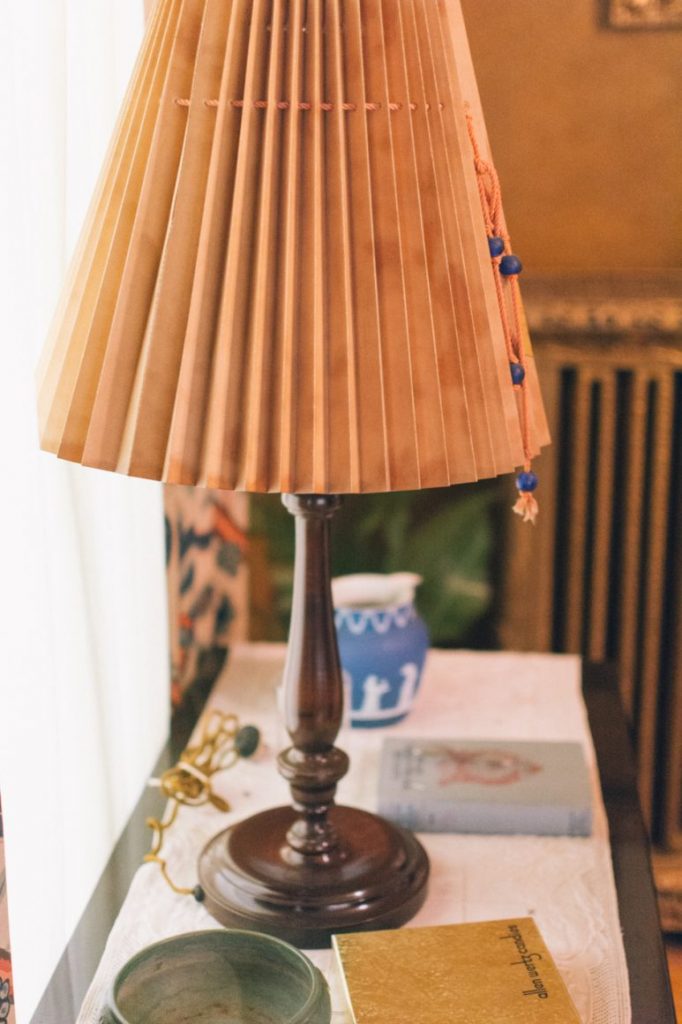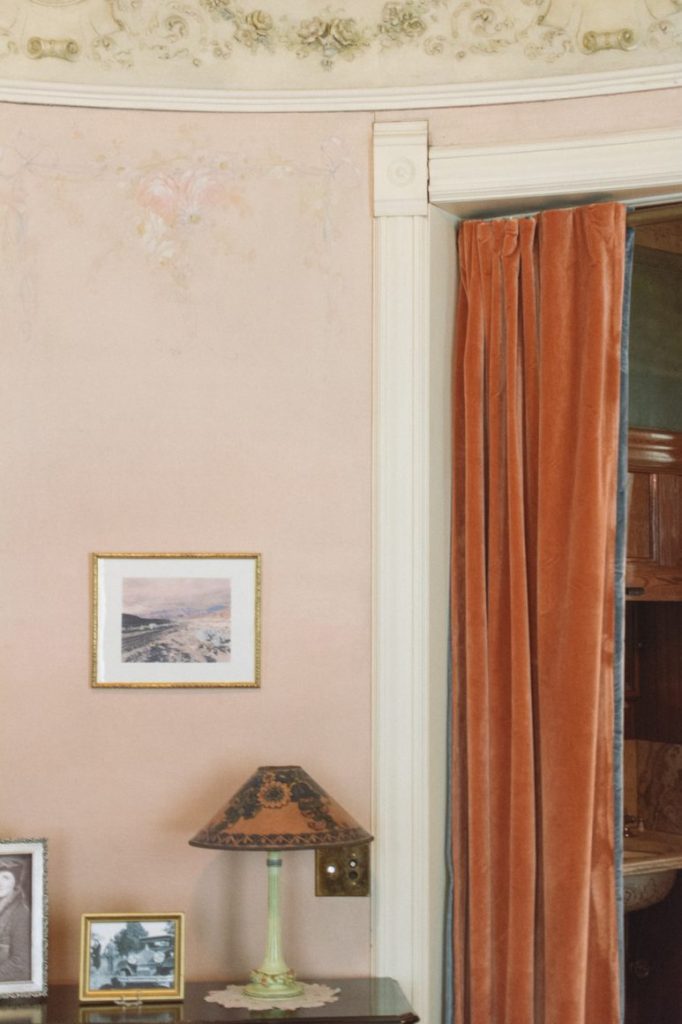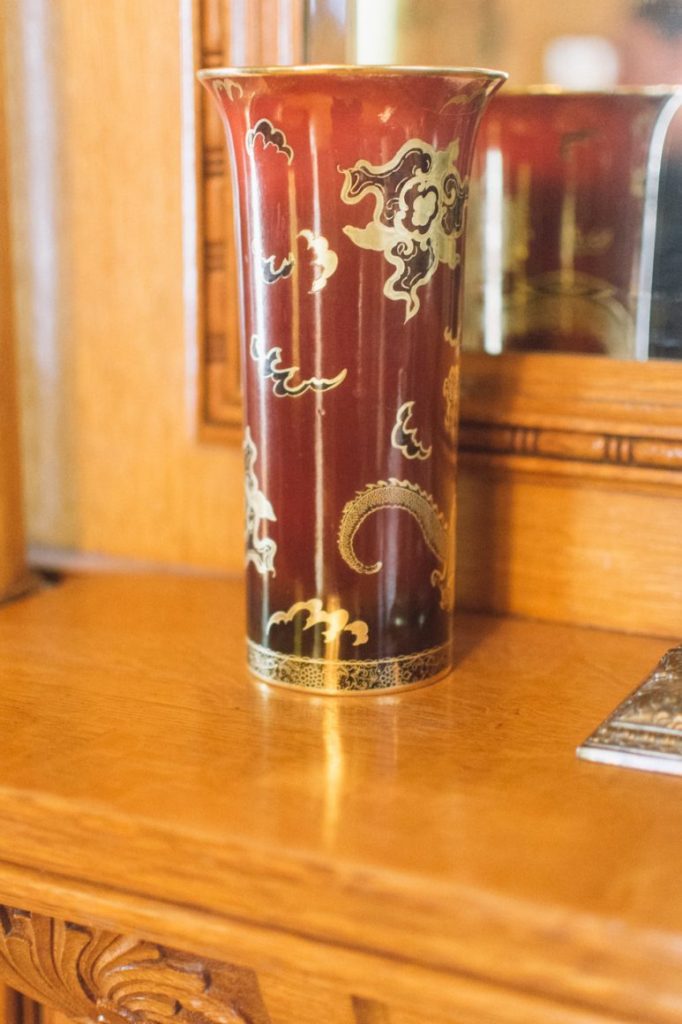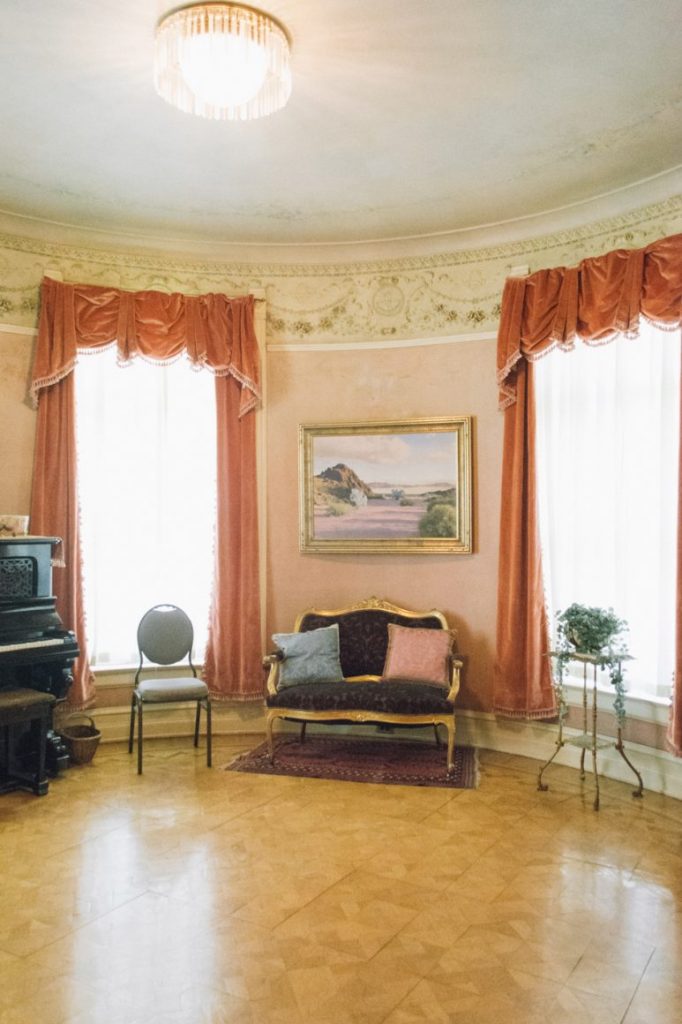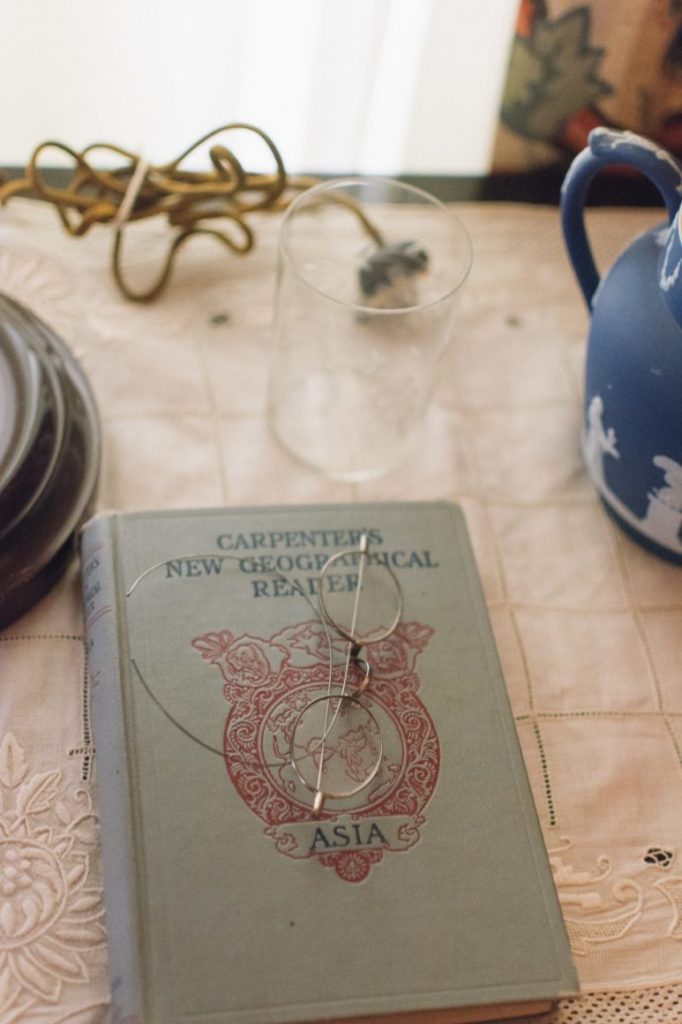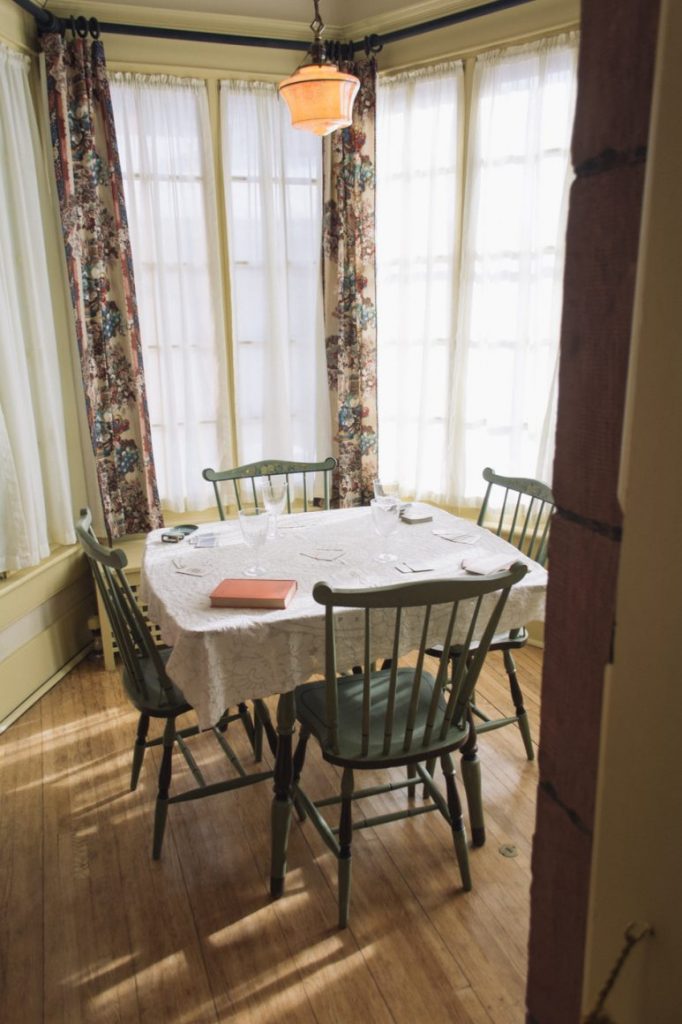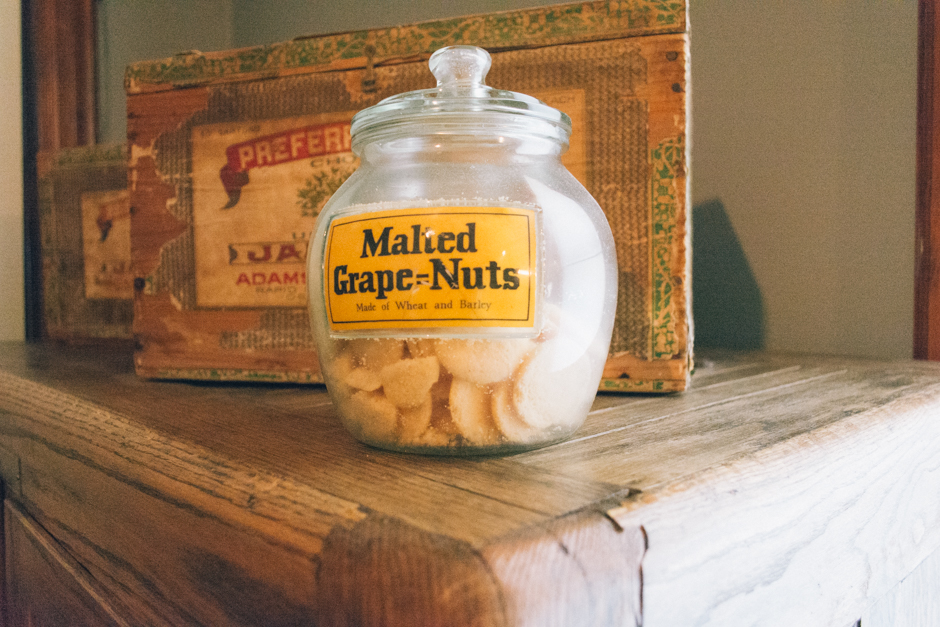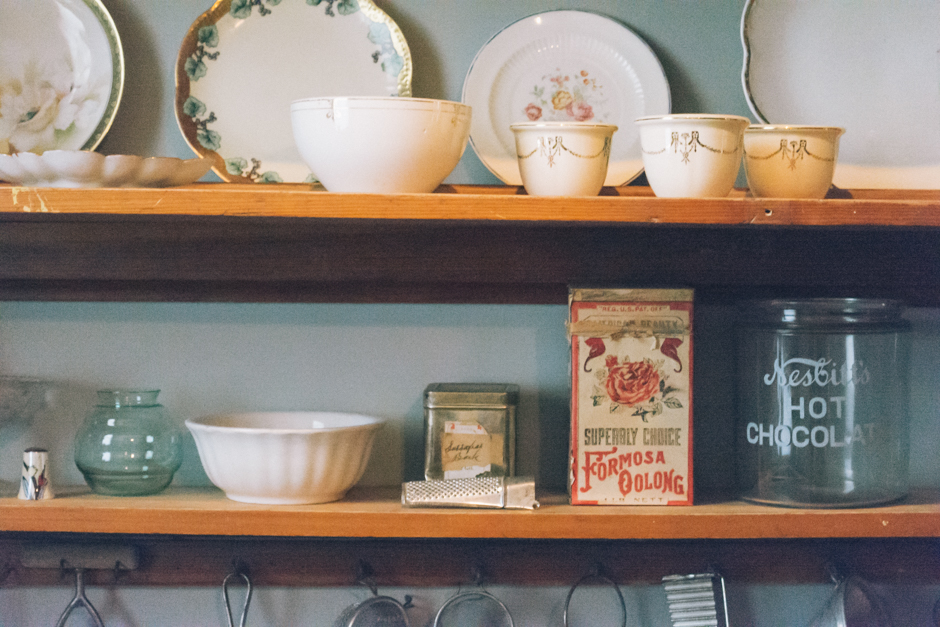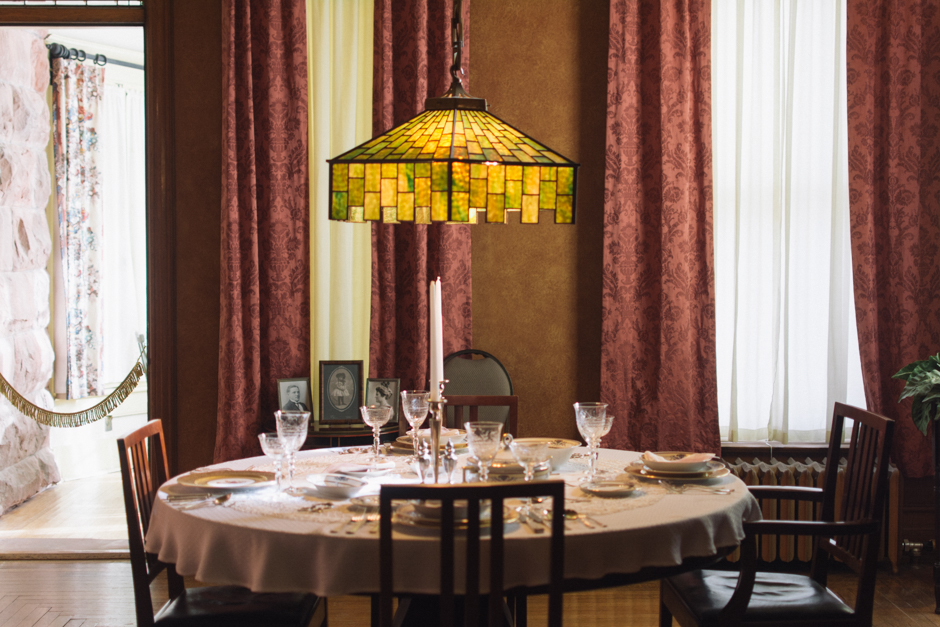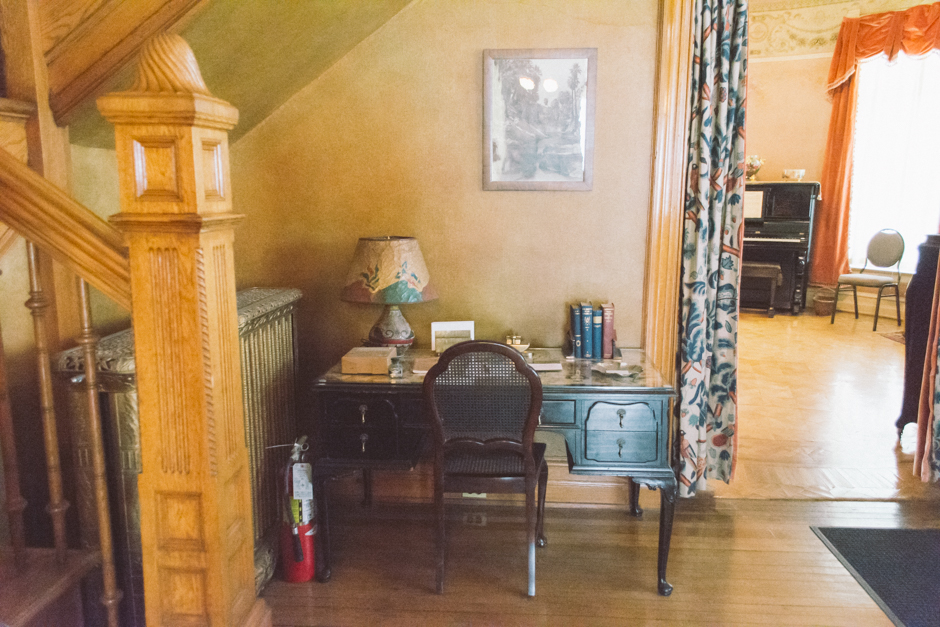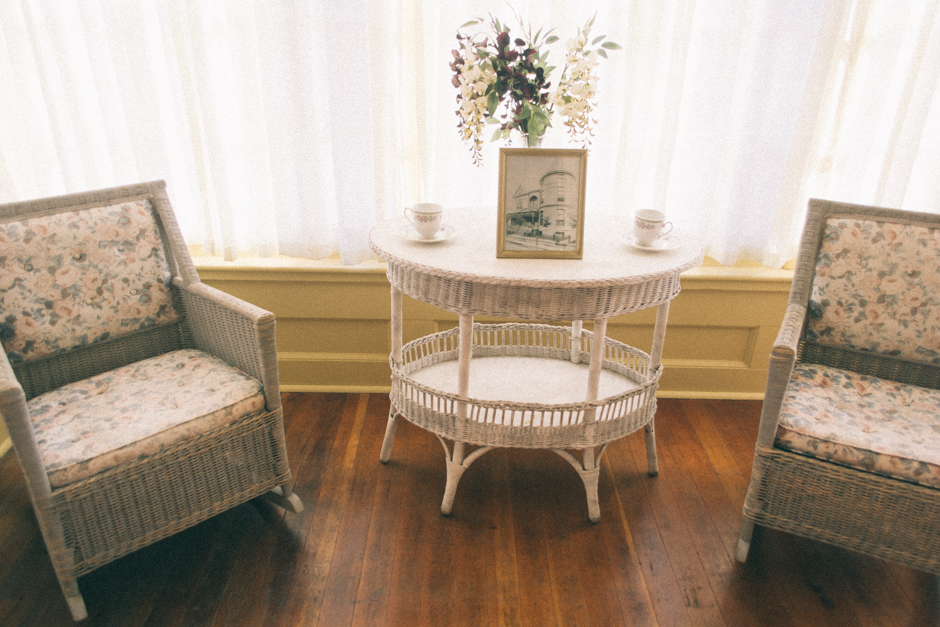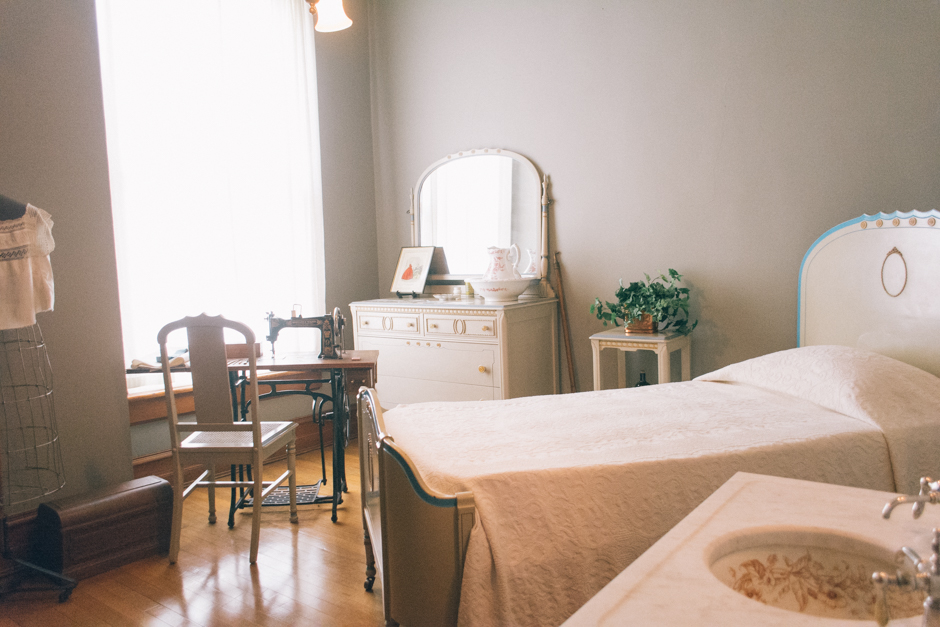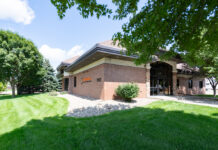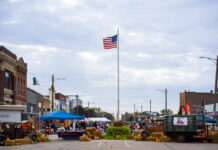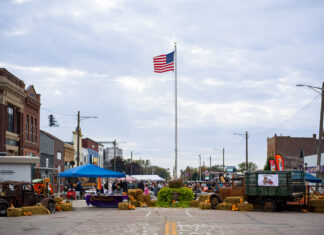The historic Adams House in Deadwood was built in 1892 and has been home to two prominent families – the Franklins and the Adams. The Victorian Queen Anne-style home includes oak interiors, hand-painted canvas wall coverings, four stained glass windows, and was unique in that it had modern, 19th century plumbing, electricity, and telephone service.
Harris and Anna Franklin (of the Franklin Hotel) hired a Chicago architect to build the home for around $8,000-$10,000. After Anna’s passing, Harris sold it to his son, Nathan, for $1. In 1920, William Emery (W.E.) and Alice Adams moved in with their family (second wife Mary later moved in).
Deadwood history executive director Carolyn Weber and docent Bonnie McGinnis gave 605 a tour of the home, which still has all of the original furnishings.
DINING ROOM
One of the biggest highlights of the dining room is the china from Bavaria, Germany, made by Heinrich & Company. “They have an 18k gold charger plate. It has a porcelain center, and you warm it up in the oven, put it under your plate of food, and it keeps your food warm for a couple of hours,” said McGinnis. “Meals back then lasted two to three hours, so chargers really had a purpose.”
A small door is located in the dining room, which hides Harris Franklin’s safe that he put in the home in 1892. When Mary closed up the home (see Frozen in Time), she left the good silver (which have W.E. Adams initials on each piece) and gold pieces inside.
The “tech-savvy” home also had servants buttons in every room, which activate a light-up panel that let servants know in which room they were needed. The dining room was also customized to ensure efficient service.
“The servants button in this room isn’t on the wall, it’s under the table,” said McGinnis. “There is an outlet by the chair leg, and you simply insert the button and tap it with your foot, and servants would come in from the kitchen.”
THERE ARE THREE DESIGN MOVEMENTS IN THE DINING ROOM: VICTORIAN, ARTS AND CRAFTS, AND ART DECO.
LIBRARY
“We have an extensive library that all belonged to W.E. Adams’ family,” said McGinnis. “He was an avid reader. He loved reading the classical and contemporary literatures. He also subscribed to the East and West Coast newspapers to keep up on things.”
Near the bookcase is a 1914 H.T. Cushman smoking stand that also has a humidor and built-in lighter.
W.E.’s desk sits in the middle of the library, with the Adams family Bible still sitting open. This displays the tragic chapter of his life. Lucile, his oldest daughter with his wife, Alice, married and moved off to Detroit. Three years later, she passed away from typhoid fever.
“The breakfast nook was a greenhouse and used to have a glass roof. Harris’ wife, Anna, grew exotic flowers out there. But, to their surprise, they didn’t realize how harsh our winters were with all of the snow and hail.”
Helen, the youngest, married and moved to California, and announced in 1925 that she was expecting a baby. Soon after, Alice was diagnosed with cancer, but managed to make the trip to California to be there for her daughter. She died shortly after arriving.
“When Helen found out her mother had passed away, she went into premature childbirth, and then Helen died in childbirth,” said Weber. “The next morning, the infant daughter passed away. So [W.E.] lost his wife, his daughter, and his granddaughter in a 48 hour period.”
He returned to an empty house and sat at his desk to write a passage about his sadness.
Weber pointed to the desk, “This is where he wrote the deaths of his family, and it is said that the ink blob on the page is a tear.”
THE FRANKLINS TOOK ALL OF THEIR FURNITURE WITH THEM, SO EVERYTHING IN THE HOUSE REFLECTS THE TIME PERIOD OF WHEN THE ADAMS LIVED THERE FROM 1920 TO 1934.
THE PARLOR
As you move from the library into the formal entertainment room, you walk through a pass-through area with an Italian marble sink (one of three in the house).
“Harris and Anna’s guest would all arrive here, dusty from the unpaved streets, and they’d freshen up right here. It’s like an early powder room,” said McGinnis.
In remembrance of W.E.’s beloved pit pull, patsy, deadwood celebrates patsy’s day every april. participants receive a free tour in exchange for donations for a local shelter.
As Weber mentioned, people of that era typically put their “best foot forward” with the main floor, as that was seen by guests and reflected their reputation. The Adams’ formal room did not disappoint, with a gorgeous piano (there are over 100 pieces of sheet music still in the bench) and another fireplace with a heat shield.
In the formal room is a photograph of W.E. and Mary. It was then that the guides gave us a little more background. Mary was from Lead and was a teacher up the hill. She was widowed by her husband, who passed away from influenza in 1917. It was then that she moved to California and began studying at what is now UCLA.
“She would take the train back to see her family, and it was on a train ride that she met W.E.,” said McGinnis.
“The Adams traveled extensively. You can see a lot of Asian influence in the pottery, vases, and other pieces around the home.”
She went on to describe the “unlikely” couple, as W.E. was wealthy, Mary was from a working class family; she was a devote Roman Catholic, he was an Episcopalian; and he was 73 and she was 29.
“You would think their age gap would be the biggest gossip, but it wasn’t,” she said. “It was back when there were more town rivalries, and Deadwood wasn’t happy she was from Lead.”
They were married in June of 1927.
There is also a photograph of Mary’s niece, Molly Mastrovich. McGinnis said, “She was like a daughter to Mary. She never had children, and they were very close.”
FROZEN IN TIME
When W.E. died after suffering a massive stroke in 1934, Mary was left alone in the large house. After staying in the home for a few years, she suddenly moved to California and left everything behind her.
“She left everything behind; all of the furniture, the china, and even her cookies in the cookie jar – we still have them in the kitchen. They’re 80 years old now, I believe,” said McGinnis.
“Mary was a smart businesswoman, and invested in early IBM and Walt Disney stock. so by the time she died in 1993 at the age of 95, she was worth about $12 million.”
The house sat vacant and in silence for 51 years, and it’s a mystery to this day as to why she abandoned her belongings and personal memorabilia. Even when she would come back and visit, Mary wouldn’t stay in her home.
“Sometimes she had guests over, gave a few private tours, and played Bridge in the house. She never stayed over in the house again, but would stay over in the Franklin Hotel,” she said. “We’re not sure why, but she told everyone that it was haunted. We think she told people that to keep out the vandals.”
In 1987, due to age and her health, Mary sold the home to a couple who promised not to change anything historically. They briefly made it into a bed and breakfast. It wasn’t until 1992 that the home was purchased by the Deadwood Historic Preservation Commission, and they decided to renovate the home and “bring it back to its original splendor.” In the year 2000, it opened to tourists.
THERE IS 14K GOLD STRIPING AROUND THE UPSTAIRS BATHTUB.
For more information, or to book your tour of the Adams House, visit deadwoodhistory.com.
ROARING TWENTIES TOUR OF THE HISTORIC ADAMS HOUSE
July 7, 14, 21, and 28
The Roaring Twenties Tour focuses on the lives of the second family that occupied the Adams House: W.E. Adams, his first wife, Alice, daughters Lucile and Helen, and his second wife, Mary. The 6 p.m. tour covers a decade filled with “unbelievable sadness and unbridled happiness.” Tickets are $15 for members and $20 for non-members. Advance reservations recommended. Call (605) 722-4800 for reservations, or purchase online at deadwoodhistory.com.


